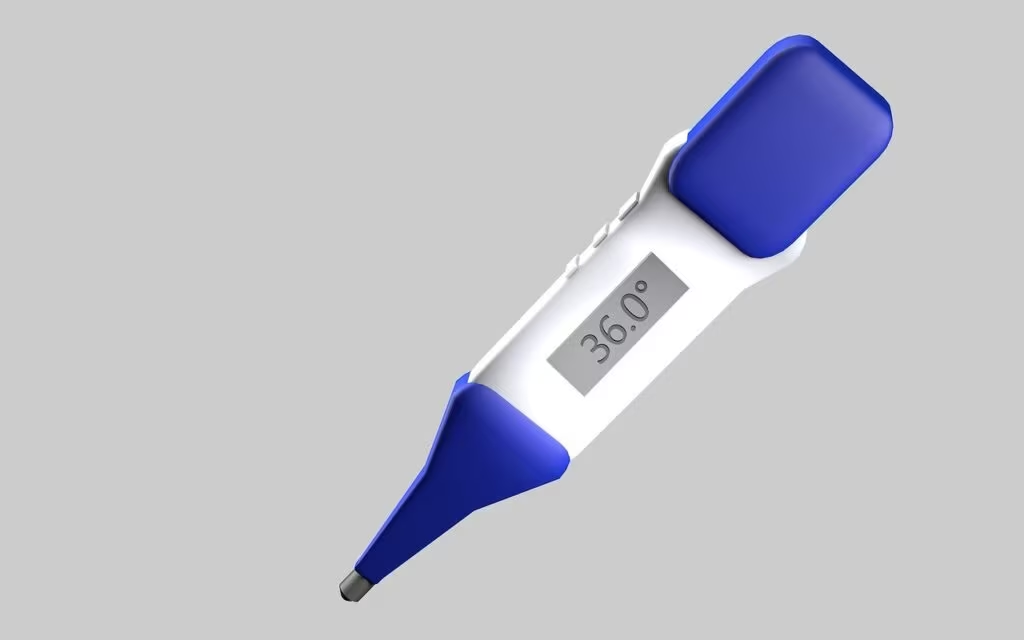It is one of the most common anxieties following a bout of illness: when exactly is it safe to stop isolating and return to normal life? Whether you’ve battled the common cold, the flu, or a variant of COVID-19, the desire to avoid spreading germs to family, colleagues, and friends is paramount.
Determining the exact moment you cease being contagious is often less about how you feel and more about adhering to specific public health timelines and physiological benchmarks. While lingering symptoms like a cough or fatigue can persist for weeks, the period during which you are actively shedding enough virus to infect others is typically much shorter.
This guide, based on consensus from leading public health organizations and medical experts, provides the clear, actionable criteria you need to confidently determine your status.
The Universal Benchmark: The 24-Hour Fever-Free Rule
The most reliable and widely accepted indicator that you are past the peak infectious phase for most common respiratory illnesses—including influenza and many non-COVID viral infections—is the 24-hour fever-free rule.
What the Rule Means
If you have been fever-free for a full 24 hours without the aid of fever-reducing medications (such as acetaminophen or ibuprofen), medical consensus suggests your viral load has likely dropped significantly, making you much less likely to transmit the illness.
- Fever Defined: A fever is generally defined as a temperature of 100.4°F (38°C) or higher. If your temperature stays below this threshold for a full day after you stop taking medication, you have met the primary criterion for ending isolation.
Why Fever is the Key Indicator
Fever is a sign that your body is actively fighting a high level of viral replication. When the fever subsides naturally, it indicates that the immune system has gained control, and the period of maximum viral shedding—the time when you expel the most infectious particles—is typically over.

Specific Guidelines for High-Profile Viruses
While the 24-hour fever rule is a good general benchmark, specific, highly transmissible viruses like COVID-19 and influenza often require adherence to stricter, time-based isolation protocols set by public health authorities.
1. COVID-19 (SARS-CoV-2)
Guidelines for COVID-19 have evolved, but the core principle remains focused on the initial five-day isolation period following symptom onset or a positive test.
- Day 0: Symptom onset or positive test date.
- Days 1–5: Strict isolation. This is the period of highest contagiousness.
- After Day 5: If you are symptom-free or symptoms are significantly improving and you have been fever-free for 24 hours (without medication), you may leave isolation. However, public health recommendations strongly advise wearing a high-quality mask (N95 or KN95) for the following five days (Days 6–10) when around others, especially indoors or in crowded settings.
The Role of Testing: For those seeking maximum assurance, especially before visiting vulnerable individuals, testing is recommended. Experts suggest taking two rapid antigen tests 48 hours apart after Day 5. If both tests are negative, it is highly likely you are no longer infectious.
2. Influenza (The Flu)
Similar to COVID-19, the flu is most contagious during the first three to four days of illness. The general rule for returning to work or school is meeting the 24-hour fever-free criterion.
- Viral Shedding: While viral shedding can last up to seven days, the risk drops sharply after the fever breaks. Children, however, may shed the virus for longer periods than adults.
3. Common Cold (Rhinovirus, etc.)
The common cold is typically most contagious during the first two to three days of symptoms. Because colds rarely involve a high fever, the primary indicators for reduced contagiousness are the improvement of acute symptoms and the passage of time. While a runny nose might linger, the risk of transmission decreases significantly after the first few days.
Addressing Lingering Symptoms: When a Cough Isn’t Contagious
One of the most confusing aspects of recovery is the persistence of symptoms like a cough, congestion, or fatigue long after the fever has gone. It is crucial to understand the difference between active infection and residual inflammation.
The Difference Between Viral Shedding and Inflammation
- Viral Shedding (Active Infection): This is the period when the virus is actively replicating in your body, and you are expelling high concentrations of infectious particles (aerosols and droplets). This correlates strongly with the presence of fever and acute symptoms.
- Residual Inflammation (Post-Infection): Once the immune system clears the bulk of the virus, the respiratory tract may remain irritated, leading to a lingering cough or congestion. This is common after bronchitis, flu, or COVID-19. While you may still shed trace amounts of non-replicating viral debris, the concentration is usually too low to initiate a new infection in a healthy person.
“If you are past the fever stage and your other symptoms are significantly improving, that lingering cough is usually just inflammation,” notes Dr. Sarah Jenkins, a public health specialist. “However, if that cough is productive (bringing up mucus), or if you are coughing intensely, you should still practice caution and wear a mask, as forceful expulsion can still spread droplets.”

Practical Steps for Lingering Symptoms
If you have met the 24-hour fever-free rule but still have a cough or runny nose, focus on source control:
- Masking: Wear a well-fitting mask (surgical or N95) in shared indoor spaces.
- Hand Hygiene: Wash hands frequently and thoroughly.
- Cough Etiquette: Cough or sneeze into your elbow or a tissue, and immediately dispose of the tissue.
High-Risk Situations and Vulnerable Populations
In some cases, the standard guidelines may not be sufficient. If you are interacting with individuals who are immunocompromised, elderly, or have underlying chronic conditions, stricter precautions are necessary.
Considerations for High-Risk Contact:
- Extended Isolation: Consider isolating for a full 7 to 10 days regardless of symptom improvement if you plan to visit a nursing home or an immunocompromised relative.
- Testing: Use rapid antigen tests immediately before the visit to confirm a negative status.
- Masking: Maintain masking throughout the visit, even if you feel completely recovered.
When to Consult a Doctor:
If symptoms worsen after initial improvement (a phenomenon sometimes called a rebound), or if you develop a new, high fever, you should consult a healthcare provider immediately. This could indicate a secondary bacterial infection or, in the case of COVID-19, a viral rebound requiring specific medical guidance.
Key Takeaways: Determining Contagiousness
To quickly assess your risk of transmission, follow these steps based on the type of illness:
| Illness Type | Primary Contagious Period | Key Indicator for Ending Isolation |
|---|---|---|
| Flu/General Virus | First 3–5 days | 24 hours fever-free (without medication) |
| COVID-19 | First 5 days | 24 hours fever-free and symptoms improving |
| Common Cold | First 2–3 days | Significant improvement in acute symptoms |
Summary of Actionable Steps:
- Rule #1: Wait until you have been fever-free for 24 hours without medication.
- Rule #2: Ensure your other acute symptoms (sore throat, body aches) are significantly improving.
- Rule #3: If you still have a cough or runny nose, mask up for the next five days, especially indoors.
- Rule #4: If testing is available (especially for COVID-19), a negative test provides the highest level of assurance.
Conclusion: Prioritizing Public Health and Personal Recovery
Understanding the timeline of viral infection is essential for responsible public health. While it is tempting to rush back to routine as soon as you feel slightly better, waiting for the 24-hour fever-free window is the single most effective way to protect your community.
Remember that recovery is not instantaneous. Even after the contagious period ends, listen to your body and allow sufficient time for rest. By adhering to these clear, medically supported guidelines, you ensure that your return to public life is safe for everyone around you.
Original author: Seraphina Seow
Originally published: November 22, 2025
Editorial note: Our team reviewed and enhanced this coverage with AI-assisted tools and human editing to add helpful context while preserving verified facts and quotations from the original source.
We encourage you to consult the publisher above for the complete report and to reach out if you spot inaccuracies or compliance concerns.

